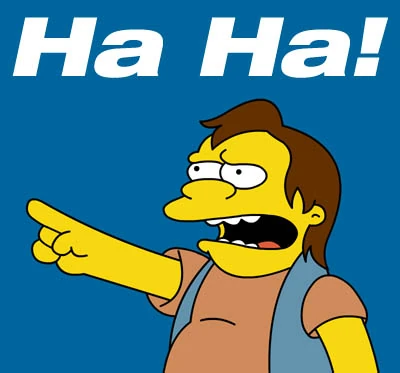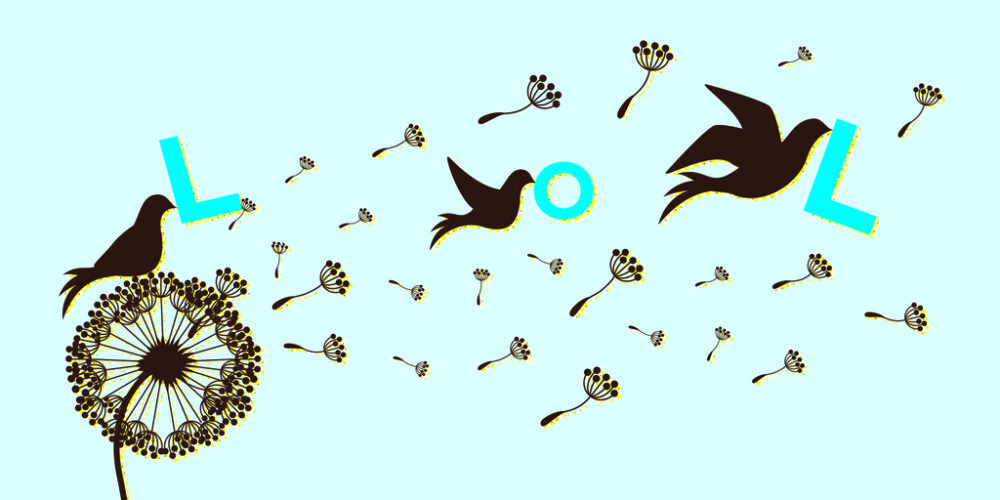Image by grmarc
By the fall of my sophomore year of high school, Myspace was the center of my universe. It wasn’t even a choice. If you were a teenager in a band in 2003, you were on Myspace. It’s where you posted your music, found punk shows to play in, flirted with girls who exclusively took selfies of themselves from a downward-facing 45-degree angle. Most importantly, it was where you connected with older kids who were in cooler bands than your own.
For my band, our king and idol was Seth. He was a grade above us, a tall, pale, skinny kid who wore his curly hair and women’s jeans with just the right amount of aloofness to give off a rockstar aura. We sucked up to him and his friends relentlessly at school and put in hours of extra work at home responding to their posts on Myspace and chatting them on AIM (AOL Instant Messenger).
“Haha or Lol?” Seth commented on his page one day.
“Lol,” I wrote.
More responses poured in. The hahas were winning by a huge margin. I started to feel nauseous.
Two hours later, Seth revealed which was right. “Lol is for bros,” he wrote. “Haha is for hipsters.”
I was horrified. Back then, hipster still had positive connotations—it meant being the antithesis of the popped-collar, jocky bros who ran our high school. I’d already lost some hipster cred because I played football and secretly loved Blink 182 and Madden. I felt certain this “Lol” gaffe would expose me as a fraud, casting me out of the hipster music group forever.
I vowed to be a haha man from that point forward.
When I checked out Facebook’s report on how people laugh online, this story immediately came to mind. Recently, Facebook measured the variations of laughter people used over Messenger during a week in May, broken down based on factors like age, gender, and geography.
This snapshot of our digital habits when it comes to humor is very interesting from both a sociological and a marketing perspective. After all, laughter is a ubiquitous part of online communication, and now, brands are constantly tweeting and snapping and commenting with consumers. Like the 15-year-old version of me, they’re desperate to get it right—and terrified of getting it wrong.

As you can see in the chart above, my hipster idol Seth was onto something. Twelve years later, haha reigns supreme. (All variations of haha count—hahahaha, haahhaa, hahahahahahahahahaha, etc.—and the same goes for the rest of the laughter types).
What’s most surprising, though, is the swift death of lol—which was so ubiquitous just a few years ago that it was inserted into the dictionary—and the meteoric rise of laughter emojis, which now own one-third of the online laughter market. (Which is projected to rise to $87 billion by 2018, according to eMarketer.)

If you’re a marketer, you’re probably wondering who’s using these new-age hieroglyphics. As you might expect, emoji laughter skews youngest, with a median age around 23. Haha isn’t far behind, though, and skews significantly younger than hehe and lol.

It’s worth noting that this graph just shows the age distribution for the people who use each type of laughter. Haha is still the most popular type of laughter across all age groups. But we can still use the data to make some conclusions: If you’re targeting millennials, emojis and hahas are probably your way to go. But if you’re running the AARP Twitter account, you might want to keep one foot off the emoji train.
Another big consideration when conveying laughter online is how batshit crazy you want to laugh. As explained in Sarah Larson’s New Yorker thinkpiece that inspired Facebook’s study: “The ‘ha’ is like a Lego, a building block, with which we can construct more elaborate hilarity.” Basically, if your friend just told you a story about how his grandma mistook him for Justin Bieber, that deserves a hahahahaha. If your boss just made a corny joke, that gets a ha.
But how much is too much? No one wants to find out that their brand is tweeting at customers like a deranged clown. Facebook broke down how often various numbers of letters were used in each variation.
As Facebook writes in the report:
Indeed, as Ms. Larson points out, the peaks in the even numbers indicate that people treat the has and hes as building blocks, and usually prefer not to add extra letters. No heh hehs here. (Settle down, Beavis.) The most common are the four-letter hahas and hehes. The six-letter hahaha is also very common, and in general, the hahaers use longer laughter. The hahaers are also slightly more open than the hehe-ers to using odd number of letters, and we do see the occasionalhahaas and hhhhaaahhhaas. The lol almost always stands by itself, though some rare specimens of lolz and loll were found. A single emoji is used 50% of the time, and it’s quite rare to see people use more than 5 identical consecutive emoji. Perhaps emoji offer a concise way to convey various forms of laughter?
The TL;DR: Go nuts with your hahas and hehes. Stick to one lol. Any more than five emojis, and you’re getting kind of weird.
Finally, Facebook broke all of this down by gender and geography because god knows they’re hoping you use this information to improve your hyper-targeted sponsored posts (and then buy more of them!).

The big gender gaps here appear to be with emojis and haha usage, which may explain why my relationship with my girlfriend has gotten better ever since I embraced this strange pictorial language. Haha, however, appears to be the clear, safe choice for brands targeting males of all ages. No more lols for you, Mr. Sexy Old Spice Man.

Both of these charts are a little hard to wrap your head around, but the heat map ultimately proves more useful. As Facebook explains: “For each laughter type, the map shows the fraction of laughter in each state out of the total laughter. The darker the color is, the more popular a laugh is compared to other states.”
For those targeting campaigns out west, hahas and hehes rule the day; lols are making their last stand in the South; and shockingly, California seems to have not discovered emoji laughter yet. (Maybe it’s not organic enough?) The Northeast, surprisingly, doesn’t favor any particular laugh. I would have at least expected my home state of New Jersey to have a strong preference. Maybe we’re just waiting for that Bruce Springsteen emoji.

via Wesley Stac
As silly as laughter analysis may seem, I suspect that the correct use of it is more crucial for brands than people might expect. Think about all the hand-wringing we do over brand voice and authenticity—as any 15-year-old boy marketing himself to vicious high schoolers will tell you, hitting the right language cues makes all the difference when it comes to being accepted by a particular group.
Just be sure you’re going after the right one. As it turns out, deep down, I was a lol-ing bro all along.
How Do You Laugh Online?




To view the original article Click Here



No comments:
Post a Comment